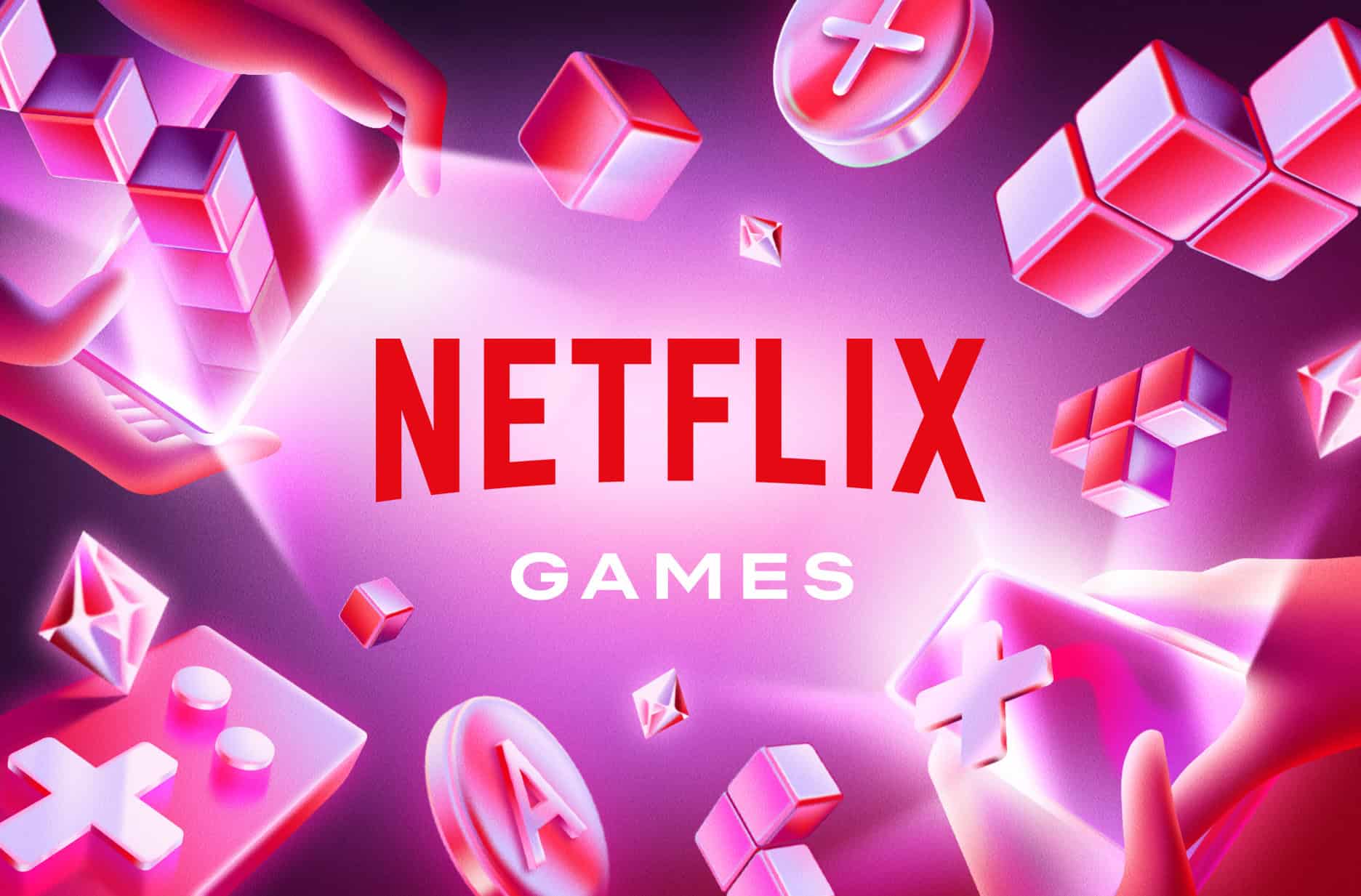Netflix’s gaming ambitions have hit a major roadblock with the recent closure of its Southern California game studio. The studio, launched in October 2022 and led by former Overwatch executive producer Chacko Sonny, was reportedly developing an ambitious multiplatform AAA game before its sudden shutdown. Despite recruiting top industry talent including Halo veteran Joseph Staten and God of War artists, Netflix’s attempt to break into high-budget game development has faltered significantly.
This closure represents a strategic pivot for the streaming giant, which appears to be recalibrating its gaming approach. Earlier this year, Netflix underwent leadership changes in its gaming division, with Mike Verdu transitioning to a new role and Alain Tascan stepping in as president of games. These shifts, combined with statements from Leanne Loombe, VP of external games, suggest Netflix is adopting a mobile-first strategy rather than pursuing AAA game development.
The company isn’t abandoning gaming entirely, but its original ambitious plans have clearly been scaled back. Two years after making headlines by hiring prominent industry figures and signaling serious intentions in the gaming space, Netflix seems to be reassessing what role games will play in its broader entertainment ecosystem.
Netflix’s Ambitions Collide with Harsh Industry Reality
Netflix’s grand push into gaming was supposed to be its next frontier—a bold effort to diversify beyond streaming and make inroads into one of the most lucrative sectors in entertainment. But by late 2024, the sheen had worn off. Behind the scenes, its ambitions to create blockbuster AAA titles fell apart, culminating in the quiet cancellation of its most high-profile project and a sharp shift in strategy.
The project in question was a multiplayer shooter led by former Halo and God of War developers—designed to rival top-tier console experiences and run across multiple platforms. Internally dubbed a “AAA moonshot,” it was part of Netflix’s plan to make a splash in premium gaming. But after struggling to hit internal milestones and amid growing concern about budgets and timelines, the company pulled the plug. The shutdown of the Southern California-based “Team Blue” studio resulted in about 30 layoffs and marked a sobering moment for the streaming giant’s gaming ambitions.
A Strategic Pivot to What Works
Instead of chasing prestige console games, Netflix is now doubling down on what has shown promise: casual and mobile-friendly titles. With over 80 games in its library, Netflix has quietly built a respectable catalog of mobile games available to subscribers at no additional cost. Many are based on existing IP, like *Stranger Things* and *Love Is Blind*, which gives Netflix a unique advantage—it can extend its most popular shows into interactive experiences without licensing hurdles.
Leadership changes have been instrumental in this pivot. In mid-2024, Mike Verdu, who was previously spearheading the gaming initiative, moved into a new role focused on innovation. In his place, Alain Tascan, a former executive at EA and Ubisoft with a strong track record in casual and social games, took over as president of games. Tascan’s arrival marked a clear shift toward pragmatic growth—focusing on titles that appeal to mass audiences and casual players, rather than competing head-on with console giants like Sony, Microsoft, or Nintendo.
The End of Netflix’s Interactive Era
Another significant sign of the changing tides came with Netflix’s quiet removal of nearly all of its interactive titles. Once touted as the future of storytelling on streaming platforms, interactive experiments like *Minecraft: Story Mode*, *Carmen Sandiego: To Steal or Not to Steal*, and *Boss Baby: Get That Baby!* have been delisted. As of late 2024, only a handful of interactive shows remain—most notably *Bandersnatch* and *You vs. Wild*.
While these offerings were early attempts at blending gaming with streaming, they never caught on the way Netflix hoped. Analytics suggested limited rewatchability and engagement, and they didn’t align well with mobile-first gaming behavior. The platform seems to have learned that interactive storytelling isn’t necessarily what gamers—or binge-watchers—are looking for.
Why the Competition is Brutal
Netflix entered gaming at a moment when industry competition was already white-hot. Legacy publishers like Activision, EA, and Ubisoft dominate the console space, while mobile gaming is fiercely contested by studios with years of optimization experience and massive player bases. Add to that the rapid expansion of cloud gaming services from tech titans like Microsoft (Xbox Cloud Gaming), Amazon (Luna), and Nvidia (GeForce Now), and it’s easy to see why Netflix’s efforts have been squeezed on all sides.
There’s also the issue of discoverability. While Netflix’s games are available through its mobile app, they must be downloaded through the App Store or Google Play. This disconnect means that users aren’t finding these games as easily as they discover shows and movies within the app. Despite Netflix’s enormous subscriber base, most of its users remain unaware that the service even includes games.
What Comes Next for Netflix Games?
Now, with the grand experiments out of the way, Netflix is recalibrating. The future of Netflix Gaming is expected to center on four pillars: casual mobile games, narrative-driven titles, family-friendly content, and games based on Netflix IP. Titles like *Oxenfree II*, which received positive reviews, suggest that there’s still space for story-rich experiences under the Netflix banner—just not on the scale or budget of a AAA console hit.
Netflix also seems keen on bringing gaming into the living room through its TV apps and controller pairing features, which are slowly rolling out. However, the reality remains: building a cohesive, successful gaming division takes more than money. It takes time, community trust, a killer catalog, and the ability to evolve quickly—all while playing catch-up in a fiercely competitive market.
Despite the setbacks, Netflix isn’t pulling out. It’s just regrouping. The dream of being the “Netflix of games” might be dead, but Netflix as a serious player in mobile and IP-based gaming? That’s still very much alive.
Key Takeaways
- Netflix has closed its Southern California game studio, abandoning its AAA game development ambitions.
- The company is pivoting to a mobile-first gaming strategy after significant leadership changes in its gaming division.
- Despite setbacks in high-budget game development, Netflix continues to maintain some presence in the gaming market.
Evolution of Netflix’s Gaming Division
Netflix’s foray into gaming represents a strategic expansion beyond its streaming roots, marked by significant investments, acquisitions, and development of original titles. The company has evolved its approach since entering the gaming market in 2021, experiencing both successes and challenges along the way.
From Streaming to Interactive Content
Netflix first experimented with interactive content through choose-your-own-adventure style programming like “Black Mirror: Bandersnatch” in 2018. This initial step blurred the line between passive viewing and active participation.
The company officially launched Netflix Games in November 2021, offering ad-free mobile games included with existing subscriptions. The strategy mirrored Netflix’s approach to animation—investing in various projects to see what would resonate with audiences.
Unlike competitors who monetize through in-app purchases, Netflix positioned its gaming division as a value-add for subscribers. This ad-free, no additional cost model differentiated Netflix in the crowded gaming market.
By integrating games directly into its mobile app, Netflix leveraged its existing platform to introduce gaming to its global subscriber base. The transition represented the company’s ambition to become a comprehensive entertainment provider rather than just a streaming service.
Key Milestones and Game Titles
Netflix’s gaming catalog began with simple mobile titles but quickly expanded to include more sophisticated offerings. Early releases included casual games and titles based on popular Netflix properties.
Notable Game Releases:
- “Stranger Things” series of games
- “Monument Valley” (acquired after initial success)
- “Squid Game: Unleashed” (based on the hit show)
- Various indie game titles
By 2023, the company saw a remarkable 180% surge in game downloads, indicating growing user engagement. This success came from a diverse portfolio spanning multiple genres and gaming styles.
Netflix prioritized quality over quantity, focusing on games that could deliver engaging experiences without the common mobile gaming pitfalls of advertisements or microtransactions. The company also began exploring cloud gaming technology to expand beyond mobile platforms.
Partnerships and Acquisitions
Netflix strengthened its gaming division through strategic acquisitions of development studios. These purchases helped build internal expertise and secure exclusive content.
Key acquisitions included Night School Studio (creators of “Oxenfree”) and Next Games. These studios brought established talent and intellectual property under Netflix’s umbrella.
The company also formed partnerships with renowned game developers to create original titles and port existing popular games to its platform. Collaborations with indie developers became particularly important for diversifying Netflix’s gaming portfolio.
In late 2024, Netflix restructured its approach, including the shutdown of Team Blue, reflecting a pivot in its game development strategy. This reorganization signaled Netflix’s adaptability and willingness to adjust its approach based on market performance.
Despite these changes, Netflix continued to invest in gaming, viewing it as a long-term strategy similar to its successful expansion into animation and original content production.
Strategic Setbacks and Challenges
Netflix’s gaming division has encountered several significant obstacles since its ambitious launch in 2021. The recent closure of Blue Studio represents just one of many challenges that have hindered the streaming giant’s expansion into the gaming market.
Monument Valley 3 and Grand Theft Auto Delays
The much-anticipated release of Monument Valley 3 has faced multiple postponements, disappointing Netflix subscribers who were eager to experience the next installment in the popular puzzle series. Originally slated for a Q3 2024 release, technical difficulties and quality assurance issues have pushed the launch into late 2025.
Similarly, Netflix’s licensing agreement with Rockstar Games for bringing certain Grand Theft Auto titles to its platform has hit significant roadblocks. The partnership, announced in early 2024, promised to deliver “select GTA classics” to Netflix subscribers. However, technical integration issues and disagreements over revenue sharing models have stalled progress.
These delays have undermined Netflix’s promise of delivering premium gaming content to its subscribers, creating a credibility gap in its gaming strategy.
Executive Departures
A wave of high-profile departures has destabilized Netflix’s gaming division leadership. Most notably, Chacko Sonny, who joined Netflix in 2023 after serving as Executive Producer for Overwatch at Blizzard, left the company in January 2025.
His departure followed that of three other senior gaming executives within a six-month period:
- Mike Verdu, VP of Gaming (December 2024)
- Leanne Loombe, Head of External Games (October 2024)
- Amir Rahimi, VP of Game Studios (November 2024)
This leadership vacuum has created strategic inconsistency. Industry analysts point to disagreements over the division’s direction as the primary cause, with some executives favoring mobile-first approach while others pushed for AAA development.
The talent drain has severely impacted Netflix’s ability to execute its gaming roadmap effectively.
Subscribers’ Reception to Gaming Content
Engagement metrics for Netflix’s gaming content have fallen significantly below expectations. Recent data reveals:
| Metric | Target | Actual |
|---|---|---|
| Monthly active users | 15 million | 4.2 million |
| Average play time | 5.5 hours | 1.8 hours |
| Games downloaded per user | 3.5 | 1.2 |
User feedback indicates several persistent issues. Many subscribers remain unaware that games are included in their subscription. The discovery process within the Netflix app has been criticized as unintuitive, with games buried under multiple menu layers.
Additionally, the quality gap between Netflix’s casual games and premium offerings from dedicated gaming platforms has deterred serious gamers from engaging with the service’s content.
Competitive Pressures in Cloud Gaming
Netflix faces intense competition in the cloud gaming space from established players with deeper gaming experience. Microsoft’s Game Pass, Amazon Luna, and NVIDIA GeForce Now have captured significant market share with their robust libraries and technical infrastructure.
These competitors offer specialized gaming features that Netflix currently lacks:
- Advanced matchmaking systems
- Cross-platform progression
- Comprehensive achievement systems
- Integrated social features
Netflix’s subscription model, while successful for video content, hasn’t translated effectively to gaming. Consumers have shown reluctance to value games as “included free” rather than specifically chosen purchases.
The company’s mobile-focused approach has also limited its appeal to console and PC gamers who represent the largest spending segment of the gaming market.
Financial Performance and Projections
Netflix’s gaming division shows mixed financial results as the company balances ambitious plans against current performance metrics. Strategic investments and earnings reports reveal both challenges and opportunities in this expanding business segment.
Earnings Call Insights
Netflix executives discussed their gaming strategy during recent earnings calls, emphasizing long-term vision despite current challenges. In its latest financial report, Netflix posted revenues of $9.83 billion and net income of $2.36 billion, demonstrating strong overall company performance while its gaming division continues to develop.
The co-CEO outlined plans for games to have “material impact” on the business, suggesting confidence in future gaming revenue despite current modest returns. This optimism contrasts with the cautious approach reflected in actual investment decisions.
Analysts noted that Netflix’s substantial cash reserves provide flexibility to invest in gaming, but the company appears selective about which gaming projects receive funding.
Investment in Gaming Content
Netflix entered the gaming industry in 2021 with a distinctive approach: no advertisements and no in-app purchases. This strategy aligns with their subscription model but limits immediate revenue streams compared to traditional gaming companies.
The company has made strategic acquisitions of game development studios to build its portfolio. These investments represent a significant financial commitment, though precise figures remain undisclosed in financial statements.
By 2023, Netflix saw game downloads surge by 180%, indicating growing user engagement with their gaming content. This metric suggests potential for future monetization despite the current focus on user acquisition rather than direct gaming revenue.
Cloud gaming infrastructure represents another major investment area as Netflix positions itself for future gaming technology trends.
Revenue from In-App Purchases
Netflix’s gaming business model deliberately excludes in-app purchases, diverging from industry norms where microtransactions generate substantial revenue. This approach prioritizes Netflix membership retention and growth over direct gaming income.
The company integrates games as a value-added feature for existing subscribers rather than a standalone revenue stream. Financial analysts estimate this strategy may increase subscriber retention rates by 2-3%, potentially justifying the investment through reduced churn.
While competitors earn billions through in-app purchases, Netflix focuses on using games to enhance the perceived value of its standard subscription. This approach may limit short-term gaming revenue but supports the company’s core business model.
Recent earnings reports do not break out gaming-specific revenue, making it difficult to assess the direct financial impact of this strategy.
Netflix’s Gaming Catalog
Netflix has amassed a substantial library of games since entering the gaming space in November 2021. Their catalog has grown to include over 100 mobile titles and several cloud gaming offerings, representing a mix of original productions and licensed properties.
Popular and Indie Game Offerings
Netflix’s gaming portfolio features both widely recognized titles and indie gems. Oxenfree II: Lost Signals stands as one of the service’s flagship original games, following Netflix’s acquisition of Night School Studio. The atmospheric narrative-driven experience has garnered positive reviews from critics and players alike.
The service also hosts Sonic Mania Plus, bringing Sega’s beloved blue hedgehog to subscribers at no additional cost. This critically acclaimed 2D platformer represents Netflix’s strategy of securing recognizable franchises.
Bloons TD, the popular tower defense series, has found a home on Netflix as well. The game’s addictive strategic gameplay loop has made it one of the more engaged-with titles in the catalog.
Many subscribers don’t realize these games are included with their standard subscription, requiring only a Netflix login to access.
Licensing High-Profile IPs
Netflix has made significant investments in acquiring notable gaming IPs. The Grand Theft Auto: The Trilogy – Definitive Edition represents one of their biggest gaming coups, bringing Rockstar’s influential open-world classics to mobile devices through the Netflix app.
This licensing strategy extends beyond well-known gaming franchises. Netflix has created games based on their original shows including:
- Stranger Things mobile games
- Too Hot To Handle game adaptations
- Queen’s Gambit Chess
These tie-ins allow Netflix to leverage existing intellectual property while creating transmedia experiences. The company typically removes the microtransactions and ads present in the original versions of licensed games, offering a premium experience.
Expansion Strategy for Mobile Titles
Netflix prioritizes mobile gaming, with iOS and Android serving as their primary platforms. The company has established a straightforward distribution method—games appear within the Netflix app but download separately when selected.
Their acquisition strategy focuses on studios with mobile expertise. Recent purchases indicate an emphasis on quality over quantity, with studios like Next Games and Boss Fight Entertainment joining the Netflix family.
Cloud gaming represents the next frontier for Netflix. The company began testing TV-based cloud gaming in limited markets in late 2023. This initiative allows subscribers to use their phones as controllers while playing on larger screens.
Internal metrics suggest most subscribers remain unaware of the gaming offerings. Only about 1% of Netflix’s subscriber base actively engages with these games, presenting both a challenge and opportunity for growth.
User Acquisition and Retention
Netflix’s gaming strategy faces significant challenges in attracting and keeping users engaged with its gaming offerings. The company’s efforts to leverage its massive subscriber base have produced mixed results despite substantial investments.
Marketing of Netflix Games
Netflix has taken a relatively subtle approach to marketing its games, integrating them within its main streaming app rather than launching a standalone gaming platform. The company promotes games through in-app notifications and dedicated sections on the Netflix mobile interface.
These marketing efforts have focused particularly on titles connected to popular Netflix shows and movies. According to mobile app intelligence data, these cross-promotional strategies have shown limited success in converting viewers to gamers.
The gaming division lacks the aggressive marketing push seen with Netflix’s original content. Industry analysts note that many subscribers remain unaware that gaming is included in their subscription, representing a significant missed opportunity for the company.
Leveraging Netflix Stories
Netflix has strategically developed games based on its popular original content to attract existing fans. Titles based on shows like “Stranger Things” have been central to this approach, creating natural entry points for viewers interested in extending their experience.
This content-driven strategy aims to capitalize on established fan bases rather than competing directly with traditional gaming giants. The company hopes familiar characters and settings will lower the barrier to entry for casual gamers.
However, the execution has been inconsistent. While some Netflix story-based games have attracted initial downloads, retention rates have fallen significantly after the first week according to user data. The games often lack the depth and replayability necessary to keep users engaged long-term.
Role of Exclusivity and Downloads
Netflix has experimented with exclusive gaming titles to differentiate its offering in the crowded gaming subscription market. The company’s internal studio in Finland was established specifically to develop original games unavailable elsewhere.
Download requirements present a significant friction point in the user journey. Unlike streaming content, games must be downloaded separately through mobile app stores, creating an extra step that many users abandon.
User retention data from late 2023 shows some positive signs. Despite price increases and crackdowns on account sharing, Netflix maintained stable user numbers in markets like South Korea, suggesting the gaming offering may contribute to overall platform stickiness.
The company faces tough competition from dedicated gaming subscription services. Netflix’s advantage lies in its massive existing subscriber base, but converting these users into active gamers requires smoother download processes and more compelling exclusive content.
Operational and Technical Hurdles
Netflix’s gaming division has encountered significant challenges in its infrastructure, application performance, and quality control processes that have impeded growth and user adoption.
Infrastructure and Cloud Challenges
Netflix’s gaming initiative faces substantial infrastructure hurdles despite the company’s streaming expertise. Their cloud gaming ambitions require different server configurations and network architecture than video streaming.
Game streaming demands near-zero latency and higher processing power than video delivery. This has forced Netflix to rebuild much of its cloud infrastructure specifically for gaming workloads.
Bandwidth requirements for cloud gaming exceed those of video streaming by 2-3 times, creating bottlenecks during peak usage periods. This technical limitation affects the company’s ability to scale its gaming services efficiently.
Netflix also struggles with cross-platform compatibility issues when deploying game services across different devices. Their engineers must optimize for dozens of hardware configurations, operating systems, and connection speeds.
Mobile App Performance Issues
The integration of games within Netflix’s primary mobile app has created numerous performance challenges. Users report significant battery drain when accessing games through the Netflix app compared to standalone gaming applications.
Loading times for Netflix mobile titles often exceed industry standards by 30-40%. This performance gap discourages casual players from exploring the gaming options within the service.
The company’s mobile titles frequently experience frame rate issues and graphical glitches on mid-range devices. These technical problems undermine the quality perception of Netflix’s gaming offerings.
Device compatibility remains problematic, with older smartphones struggling to run Netflix games smoothly. The development team must balance graphic quality with performance across a wide range of hardware specifications.
Quality Assurance and Testing
Netflix’s QA processes for games differ significantly from their content streaming protocols, creating workflow inefficiencies. Game testing requires specialized knowledge and tools that weren’t initially part of Netflix’s technical infrastructure.
Bug reporting systems designed for video content fail to adequately capture the complexity of game-related issues. This has resulted in slower response times to critical gaming bugs.
Testing across multiple devices and platforms has proven particularly challenging. Netflix must verify performance across:
- iOS and Android mobile devices
- Smart TVs with varying capabilities
- Desktop platforms with different specifications
The company lacks the established QA pipelines that dedicated game studios have refined over decades. This quality control gap has contributed to inconsistent user experiences across Netflix’s growing game library.
Leadership and Talent
Netflix’s gaming division has experienced significant leadership changes and talent acquisitions that have shaped its strategic direction. These shifts reflect the company’s evolving approach to gaming and its attempts to establish itself in the competitive industry.
Executive Leadership in Gaming
In mid-2024, Netflix reorganized its gaming leadership structure by appointing Alain Tascan as president of games. This move coincided with Mike Verdu, who initially built the division, transitioning to a new role within the company. The leadership change signaled a strategic shift in Netflix’s gaming ambitions.
Tascan quickly began implementing changes after taking the helm in July. His appointment came as Co-CEO Greg Peters continued to emphasize gaming as a potential growth area for the streaming giant.
The leadership realignment reflects Netflix’s move toward a mobile-first approach, as articulated by Leanne Loombe, VP of external games. This strategic recalibration indicates the company’s response to market realities and user engagement patterns.
Talent Acquisition and Game Development
Netflix made significant waves by recruiting high-profile game industry veterans. Among the notable hires were Chacko Sonny, formerly of Blizzard Entertainment, and Joseph Staten, who had worked on the Halo franchise. These appointments initially suggested Netflix’s serious intent to develop AAA gaming experiences.
Jeet Shroff, a former VP at Epic Games, was brought on in a newly created position as VP of games tech and portfolio development. His role focused on ensuring consistency and quality across Netflix’s expanding game offerings.
However, recent events have undermined these talent investments. The closure of Team Blue, Netflix’s internal triple-A studio founded in 2022, resulted in the departure of several high-profile developers before any titles were released.
Influence of Creatives and Developers
The involvement of creative talents like Rafael Grassetti, known for his work on God of War, initially boosted Netflix’s gaming credentials. These developers brought expertise from established gaming studios and were expected to create distinctive gaming experiences aligned with Netflix’s content portfolio.
Creative directors and lead developers had been working on adapting Netflix’s popular IPs into game formats. The “Squid Game” franchise was among the properties being considered for gaming adaptations.
Despite assembling impressive creative teams, Netflix has struggled to fully leverage this talent. The company’s shifting strategy from AAA development to mobile gaming has affected how these creatives contribute to Netflix’s gaming vision. Recent studio closures suggest difficulties in maintaining a stable environment for these developers to produce the high-quality content initially envisioned.
Partnerships and Collaborations
Netflix’s gaming division has pursued strategic partnerships to build its presence in the competitive gaming market. These collaborations range from established gaming studios to leveraging entertainment properties, creating a network of relationships aimed at strengthening Netflix’s position despite recent setbacks.
Collaborations with Gaming Studios
Netflix has formed significant partnerships with major gaming studios to bolster its gaming division. A notable collaboration is with Ubisoft, one of the industry’s largest publishers. This partnership, formed after Netflix officially announced its gaming ambitions in 2021, aimed to bring established game franchises to the Netflix platform.
The streaming giant has also acquired several studios to enhance its development capabilities. These acquisitions include Next Games and Boss Fight Entertainment, bringing experienced talent into Netflix’s growing gaming ecosystem. These studios were meant to develop games based on Netflix properties and create new original titles.
Despite these efforts, recent developments suggest challenges in these collaborations. The closure of Blue Studio, which was working on a multi-platform AAA game, marks the first major setback in Netflix’s studio partnerships since the gaming initiative began.
IP Partnerships with Entertainment Companies
Netflix has leveraged its vast library of original content to create gaming experiences based on popular shows and movies. These IP partnerships allow Netflix to offer exclusive gaming content that connects directly to its streaming offerings.
The company’s approach differs from competitors by focusing on entertainment properties they already control. This strategy provides Netflix with a unique advantage – the ability to create gaming experiences that extend storytelling beyond passive viewing.
Several games based on Netflix properties have already been released on mobile platforms. These titles aim to deepen audience engagement with Netflix brands through interactive experiences.
The integration of entertainment and gaming represents a core component of Netflix’s strategy to create an interconnected content ecosystem that keeps subscribers within the Netflix platform for both passive and active entertainment.
Strategic Fit with Gaming Ecosystem
Netflix has positioned its gaming division as complementary to its core streaming business rather than a standalone venture. This approach aims to create added value for existing subscribers instead of competing directly with established gaming platforms.
The Southern California region has been a focal point for Netflix’s gaming operations, allowing access to talent from both the entertainment and gaming industries. This geographic strategy enables Netflix to bridge Hollywood creativity with gaming development expertise.
Netflix’s gaming strategy initially focused on mobile titles included with standard subscriptions. This model differs significantly from competitors who typically charge for premium games or require separate gaming subscriptions.
Despite recent setbacks, Netflix’s financial strength provides runway for continued gaming experiments. With reported revenues of $9.83 billion and net income of $2.36 billion, the company has resources to refine its approach while managing risk in the highly competitive gaming market.
Community and Cultural Impact
Netflix’s gaming division has created unique connections with viewers by leveraging its original content library and established fandoms. The relationship between Netflix’s shows and games has evolved into a two-way cultural exchange, with each medium enhancing the other.
Games Based on Popular Netflix Series
Netflix has strategically developed games based on its most successful shows to extend viewer engagement beyond passive watching. “Stranger Things: 1984” and “Stranger Things 3: The Game” were among the first titles released, allowing fans to explore the mysterious world of Hawkins through pixel art adventures.
“Squid Game: Unleashed” became one of the platform’s most anticipated gaming releases following the global phenomenon of the Korean survival drama. The game lets players experience the tension of the show’s deadly competitions in a more interactive format.
Other popular Netflix properties like “Too Hot To Handle” and “Love Is Blind” received game adaptations that incorporate the dating shows’ mechanics into casual gaming experiences. These games extend the franchises’ reach while providing additional entertainment for dedicated fans between seasons.
Cultural Phenomenons and Gaming
Netflix’s approach to gaming has influenced how entertainment properties extend their cultural footprint. By creating games that complement rather than simply replicate their shows, Netflix has established a new model for transmedia storytelling.
The company’s gaming division initially faced skepticism from dedicated gamers. Many viewed the offerings as mere promotional tools rather than substantial gaming experiences. This perception has gradually shifted as Netflix has improved game quality and variety.
Gaming collaborations with external properties have also emerged. Rumors of a potential SpongeBob game partnership showed Netflix’s interest in expanding beyond its original content library to attract broader gaming audiences.
The streaming giant’s gaming strategy represents a significant shift in how media companies approach intellectual property. Rather than simply licensing their characters for games, Netflix creates continuity between viewing and playing experiences.
Interactive Content and Viewer Engagement
Netflix pioneered a middle ground between traditional shows and games with its interactive content like “Black Mirror: Bandersnatch” and “You vs. Wild.” These choose-your-own-adventure experiences blur the lines between passive viewing and active gaming.
The company’s gaming division has built upon this foundation by developing games that maintain narrative continuity with their source shows. This approach keeps viewers engaged with franchises between seasons through meaningful story extensions rather than disconnected experiences.
Mobile accessibility remains central to Netflix’s gaming strategy. By making games available directly through their app on devices subscribers already own, they’ve removed barriers to entry that traditional gaming platforms present.
The integration of gaming into Netflix’s broader content ecosystem represents a significant evolution in how audiences interact with entertainment properties. When successful, this approach transforms passive viewers into active participants in the worlds they’ve come to love.
Future Prospects of Netflix Gaming
Despite recent setbacks, Netflix’s gaming division has several promising developments on the horizon. The company continues to invest in expanding its gaming portfolio while exploring new technologies and platforms to reach broader audiences.
Anticipated Releases and Updates
Netflix has a robust pipeline of upcoming game titles planned for late 2025 and 2026. The streaming giant is leveraging its popular original content to create tie-in games that capitalize on established fan bases. Games based on “Squid Game,” “Stranger Things,” and “Bridgerton” are reportedly in development.
The company recently acquired three mid-sized gaming studios to bolster its in-house development capabilities. These acquisitions should help Netflix overcome some of the production challenges it faced in early 2025.
Industry insiders report that Netflix is prioritizing quality over quantity for future releases. This strategic shift comes after user feedback indicated preferences for fewer, more polished games rather than a large library of basic mobile titles.
Innovation in Gaming Formats
Netflix is exploring innovative approaches to blur the line between passive viewing and active gaming. Interactive content like “Black Mirror: Bandersnatch” proved successful, and the company is expanding this concept with more sophisticated choice-based experiences.
The company’s controversial push into AI gaming continues despite initial negative reception. Netflix has partnered with several AI specialists to develop adaptive gaming experiences that learn from player behavior and customize difficulty levels accordingly.
Cloud gaming technology remains a priority investment area for Netflix. This would allow subscribers to instantly play games without downloads, mirroring the convenience of their video streaming service.
Key Innovation Areas:
• Interactive storytelling with branching narratives
• AI-driven personalized gaming experiences
• Cloud gaming infrastructure
• Cross-media integration between shows and games
Expansion into PC and Console Gaming
Netflix’s gaming ambitions extend beyond mobile, with plans to enter PC and console markets by mid-2026. The company has started recruiting developers with AAA gaming experience from established studios, indicating serious intentions for high-budget productions.
Several partnerships with existing gaming publishers have been announced to bring Netflix-branded content to major gaming platforms. These collaborations may help Netflix overcome its limited experience in developing complex games for these systems.
Testing for a dedicated Netflix gaming app for PC began in January 2025. The service aims to offer a unified experience across devices while maintaining the subscription-based model that powers its video streaming business.
Netflix faces significant competition in this space from established gaming services like Xbox Game Pass and PlayStation Plus. The company hopes its extensive media library and cross-platform strategy will provide enough unique value to carve out market share.
Frequently Asked Questions
Netflix’s gaming division faces numerous challenges including studio closures, strategic shifts, and financial concerns. These issues have prompted significant adjustments to the company’s approach in the gaming market.
What challenges has Netflix’s gaming division encountered recently?
Netflix’s gaming division has experienced a major setback with the closure of Blue Studio. This studio had been developing a multi-platform AAA game before operations were shut down.
The closure marks the first studio shutdown since Netflix began its gaming initiative in 2021. This development raises questions about the sustainability of Netflix’s current approach to gaming.
Industry observers note that despite Netflix’s substantial financial resources, the company appears to be reconsidering its investments in certain gaming projects.
How are the setbacks affecting Netflix’s long-term gaming strategy?
These recent setbacks may signal a shift in Netflix’s overall gaming strategy. The company seems to be reevaluating the types of games and development studios it wants to support.
Netflix initially planned an aggressive expansion into gaming, with goals to offer around 50 titles by the end of the year. The recent studio closure suggests this timeline or approach may be changing.
The company now faces the challenge of balancing its ambitions in the gaming sector against the realities of development costs and market competition.
What impact have the layoffs had on Netflix’s gaming division’s progress?
Layoffs at Blue Studio and potential restructuring across the gaming division have slowed development timelines for several projects. Key talent departures have left knowledge gaps in specific game development areas.
The loss of industry veterans who were leading AAA game development has particularly impacted Netflix’s ability to compete in the premium gaming market. These professionals brought valuable experience that will be difficult to replace quickly.
Progress on several announced titles has been delayed as remaining teams reorganize and adjust to new priorities.
How is Netflix adapting its business model in response to gaming division challenges?
Netflix appears to be pivoting toward a more sustainable gaming model that better aligns with its streaming business. The company is focusing more on mobile games that complement its existing content library.
The company continues building its in-house team of gaming experts, including the establishment of an internal video game studio in Finland. This suggests Netflix remains committed to gaming despite recent setbacks.
Netflix is likely to pursue more targeted acquisitions and partnerships rather than building everything internally from scratch.
What financial implications for Netflix following the gaming division setbacks?
Despite the gaming division’s challenges, Netflix remains financially robust with reported revenues of $9.83 billion and net income of $2.36 billion in its third-quarter earnings. The company has the resources to absorb setbacks in its gaming initiatives.
The decision to close Blue Studio indicates Netflix is becoming more selective about where it allocates resources within its gaming division. This suggests a more fiscally disciplined approach to game development.
Investors are watching closely to see if these gaming setbacks affect Netflix’s overall growth strategy and subscriber retention efforts.
What steps is Netflix taking to compete with other players in the gaming industry?
Netflix has hired industry veterans like former Electronic Arts mobile gaming executive Mike Verdu to lead its gaming initiatives. This demonstrates the company’s commitment to bringing experienced leadership to its gaming division.
The company is leveraging its massive user base of over 200 million subscribers as a potential advantage in the gaming market. This built-in audience gives Netflix a distribution channel that pure gaming companies might envy.
Netflix is also exploring how to integrate gaming experiences with its popular shows and movies, creating a unique selling proposition that distinguishes it from traditional gaming companies.







